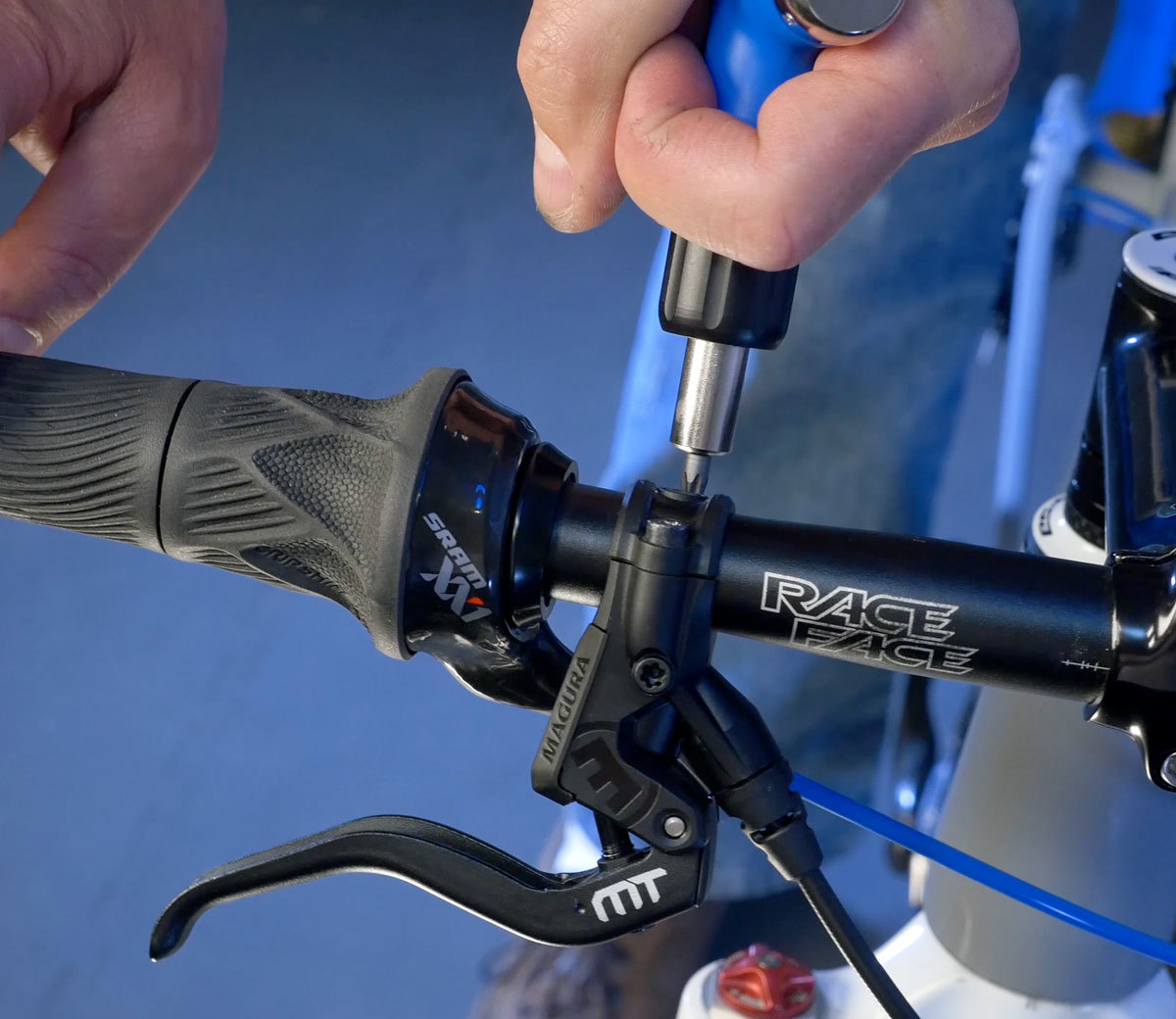Brake Lever Mounting & Positioning: Upright Bars
This article will review brake lever mounting and positioning on upright handlebars.
Getting Started
The concept for upright lever installation and positioning is the same for mechanical as it is for hydraulic. Brake levers are commonly made with a compression slot in the lever body. As the mounting bolt is tightened, the slot is squeezed to hold the lever tight to the bars.
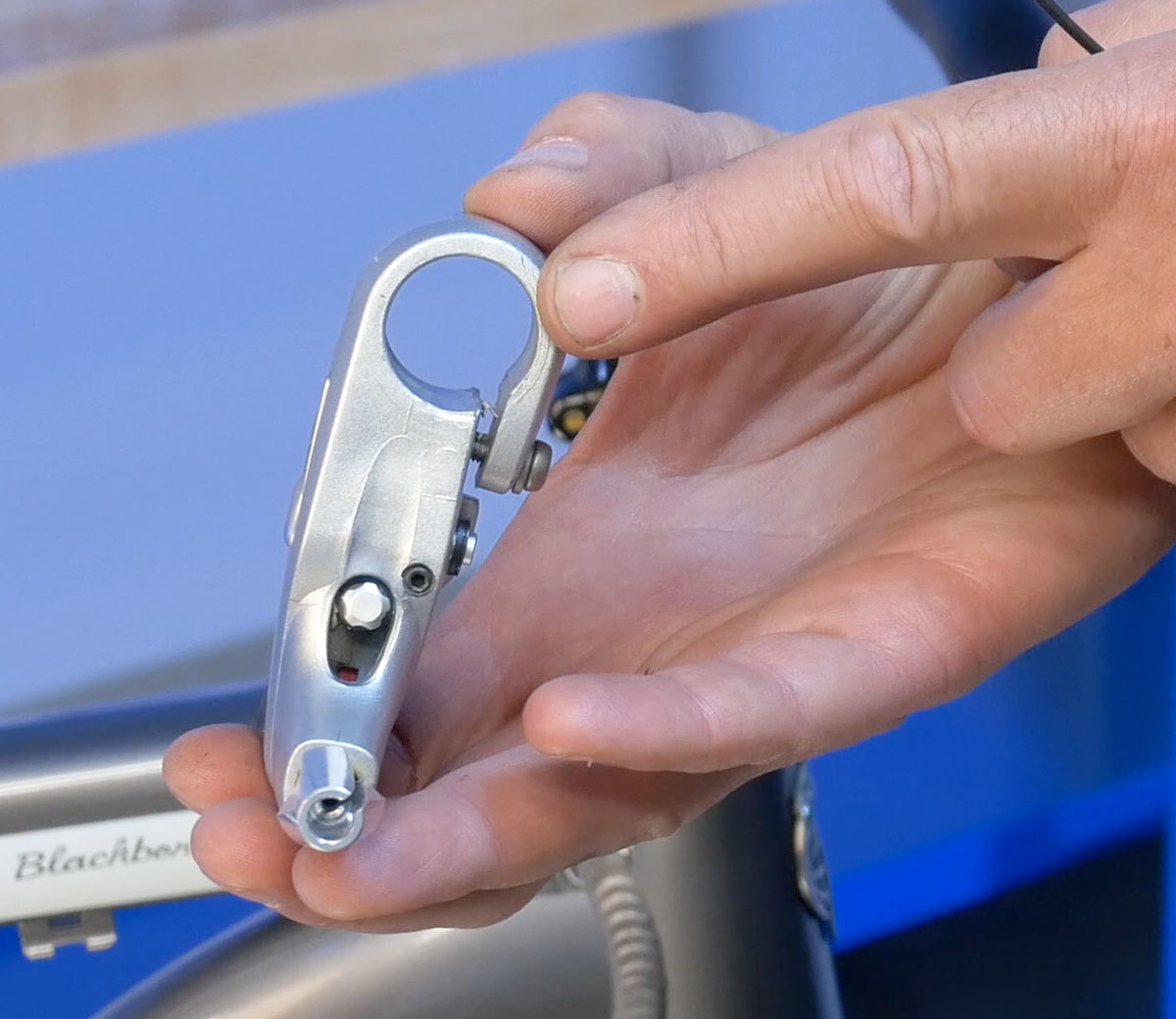
Mount
To install the levers, begin by determining which lever is the right and left side. Look for logos facing the front.
If there is a separate trigger-style shift lever, install that first on the handle bars. Next, install the brake lever, and then finally the grip.
For the twist style shifters, install the brake lever first, then the shifter, and then the grip.
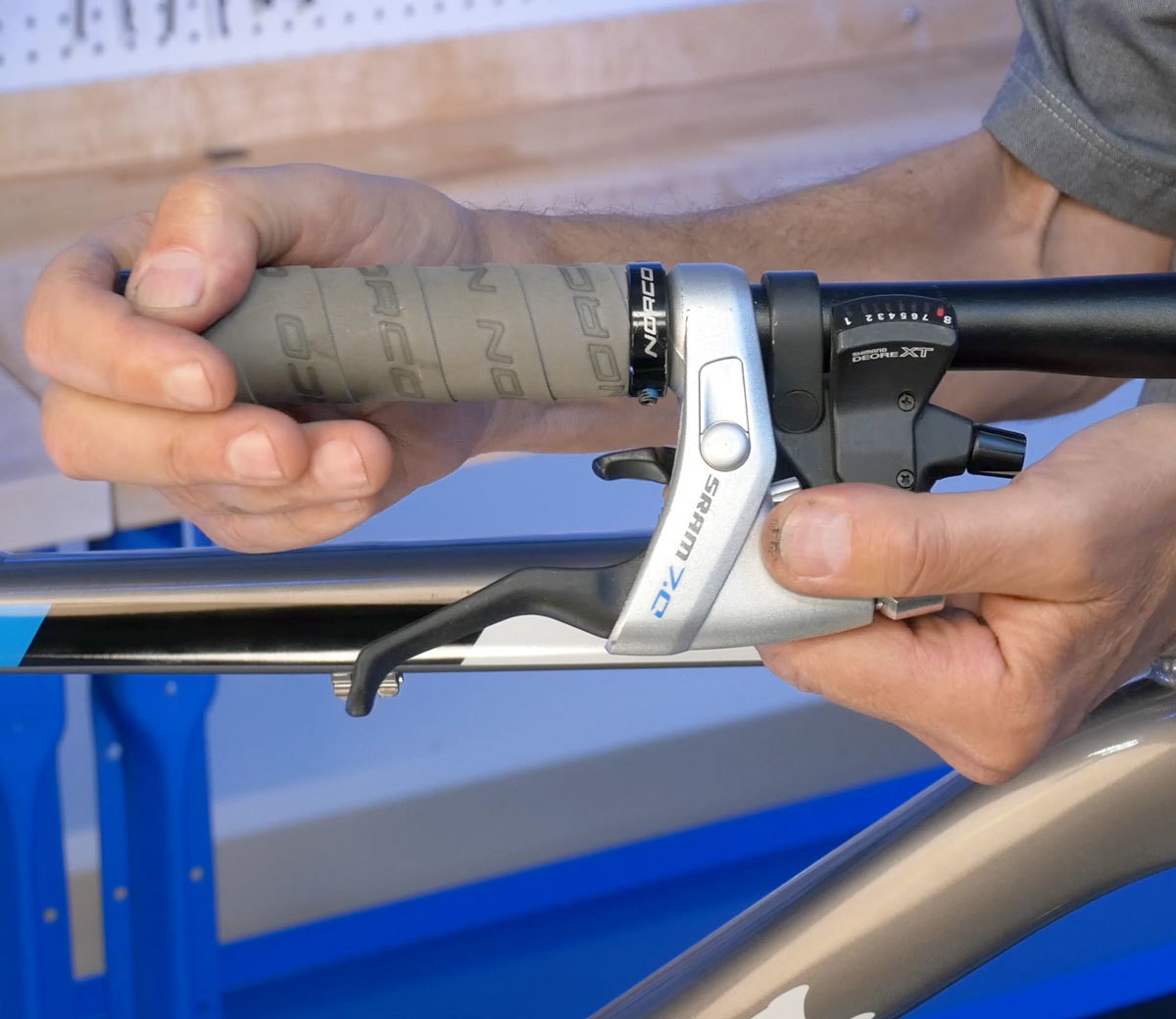
Position
Set the lateral or left-to-right positioning of the lever for ease of use and comfort. Do not move the lever body all the way outward laterally, as it can interfere with the hand. Move the lever slightly inboard to get some clearance.
Lever body rotation is set for comfort. In this example, the levers are nearly horizontal and would not be well positioned. The user must then twist their wrist to pull the lever effectively.
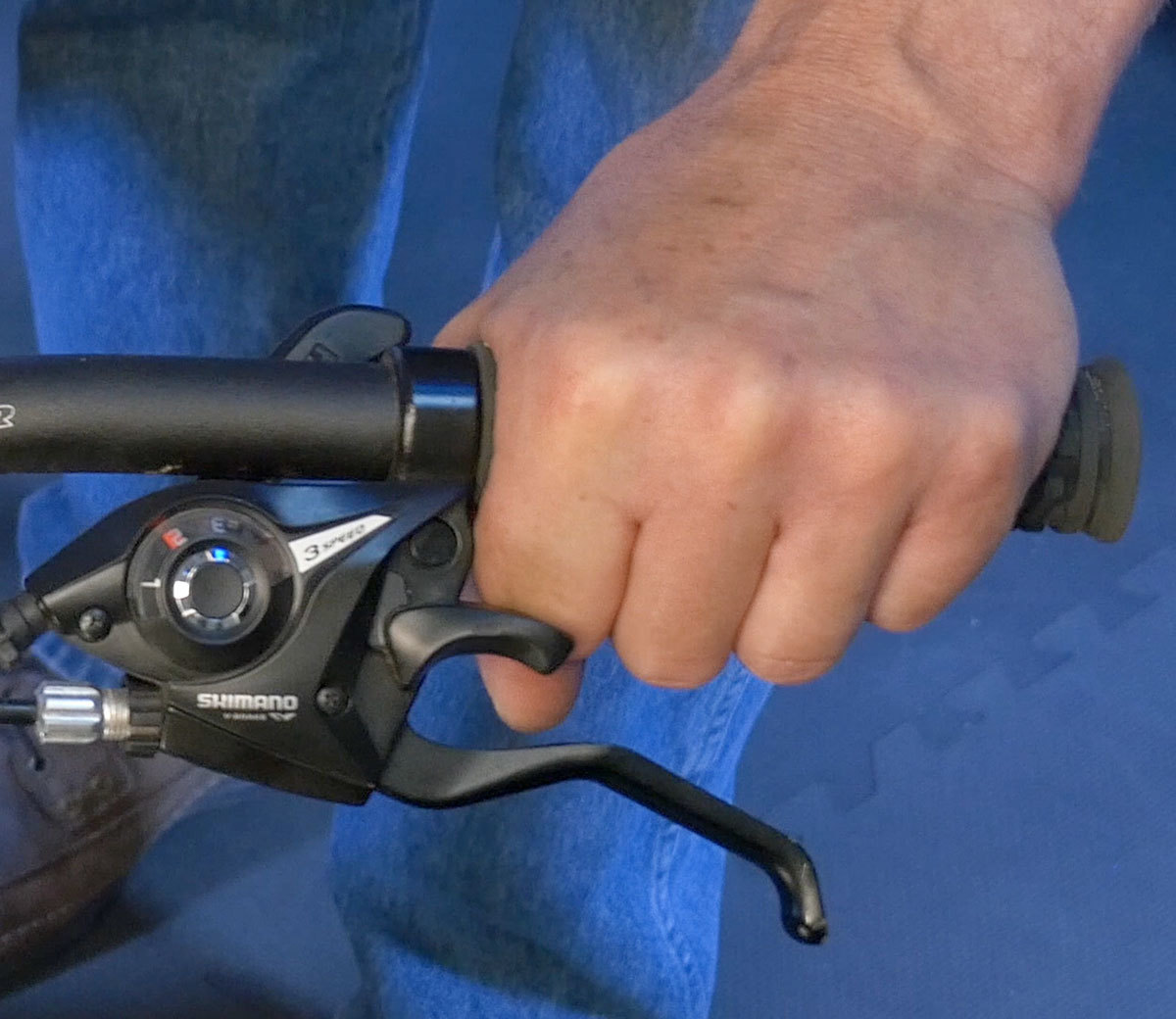
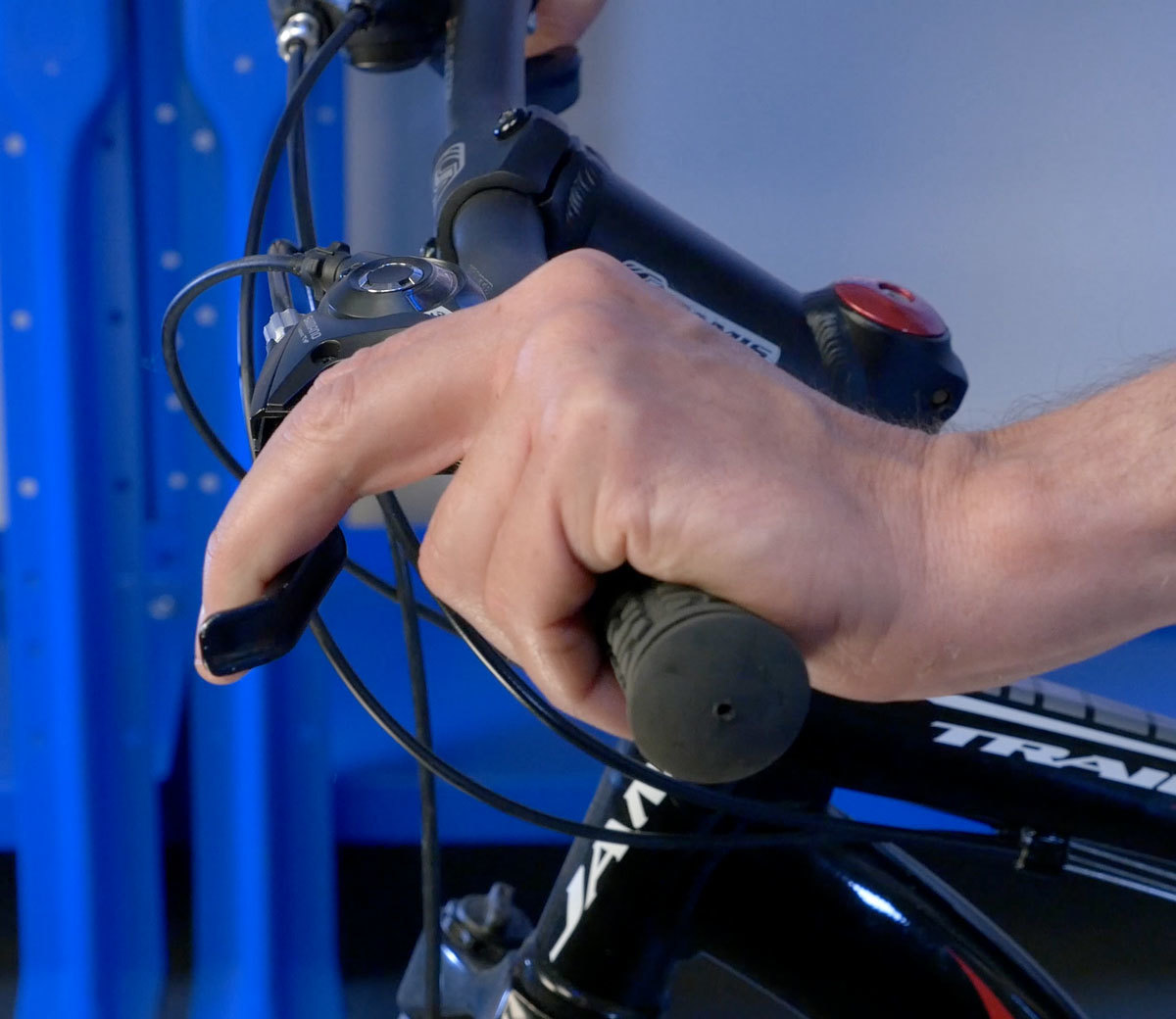
Lever rotated too far upward is difficult to use
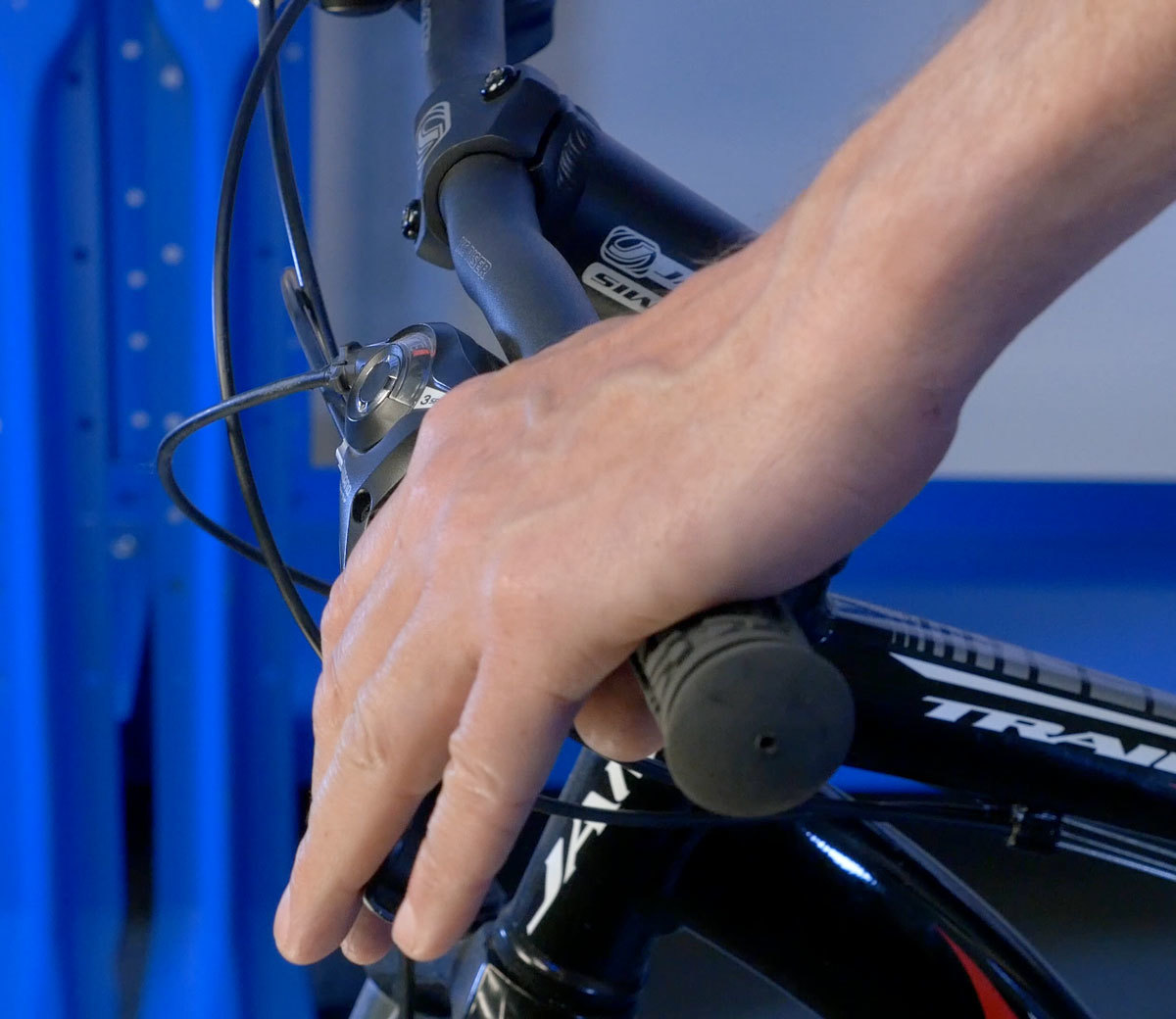
Rotate lever to match angle of arm
A better alignment is to have the lever body angled downward about 45 degrees from horizontal. This places the lever swing more in-line with the arm and the wrist of the user.
Sight each lever from above and behind, seeing that the rotation is symmetrical.
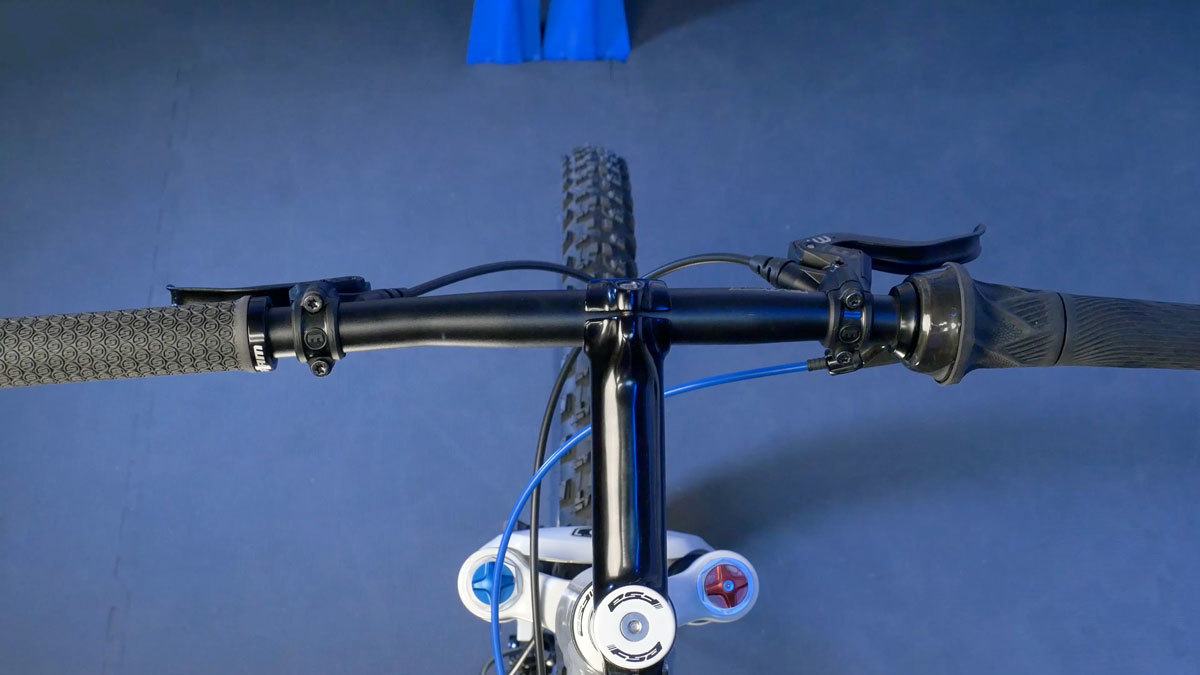
Secure
Secure both levers to the manufacturer’s torque specifications, which can range from 3 to 7 Newton meters, which is moderately low.
